5 Things You Need to Know About Cupid
Cupid is the ancient Roman god of love and the counterpart to the Greek god Eros. It’s him who inspires us to fall in love, write love songs...
Valeria Kumekina 14 June 2024
Indian modernists have been vanguards of shaping the narrative of Indian art in the modern world. Defining their individualistic artistic sensibilities during the tumultuous decades around India’s independence, these highly talented artists pursued relentless creativity. By constantly experimenting and evolving through different phases in their careers, they created landmark works that garnered critical acclaim and gave a new identity to Indian art. Here are some of these noteworthy artists who changed the face of modern Indian art.
Heralded as the father of “modern Indian art”, Raja Ravi Varma is credited with dawning a renaissance in India’s art history. Receiving the patronage of Maharaja Ayilyam Thirunal, the ruler of Travancore, when he was 14, the artist studied under the guidance of Danish painter Theodore Jensen. With his mastery over hyper-realistic imagery executed in the medium of oil, the artist captured Indian culture and mythology in an extraordinary synthesis of Indigenous iconography and western technique.
Highly inspired by the beauty of the female form, he relentlessly captured women from diverse backgrounds on his canvases. While highly sought after by royal courts, the artist also championed the cause of bridging the gap between art and the masses. By launching Raja Ravi Varma Press in 1894 to mass-produce oleographic prints of his paintings, he shattered the limited accessibility of art to only affluent families.
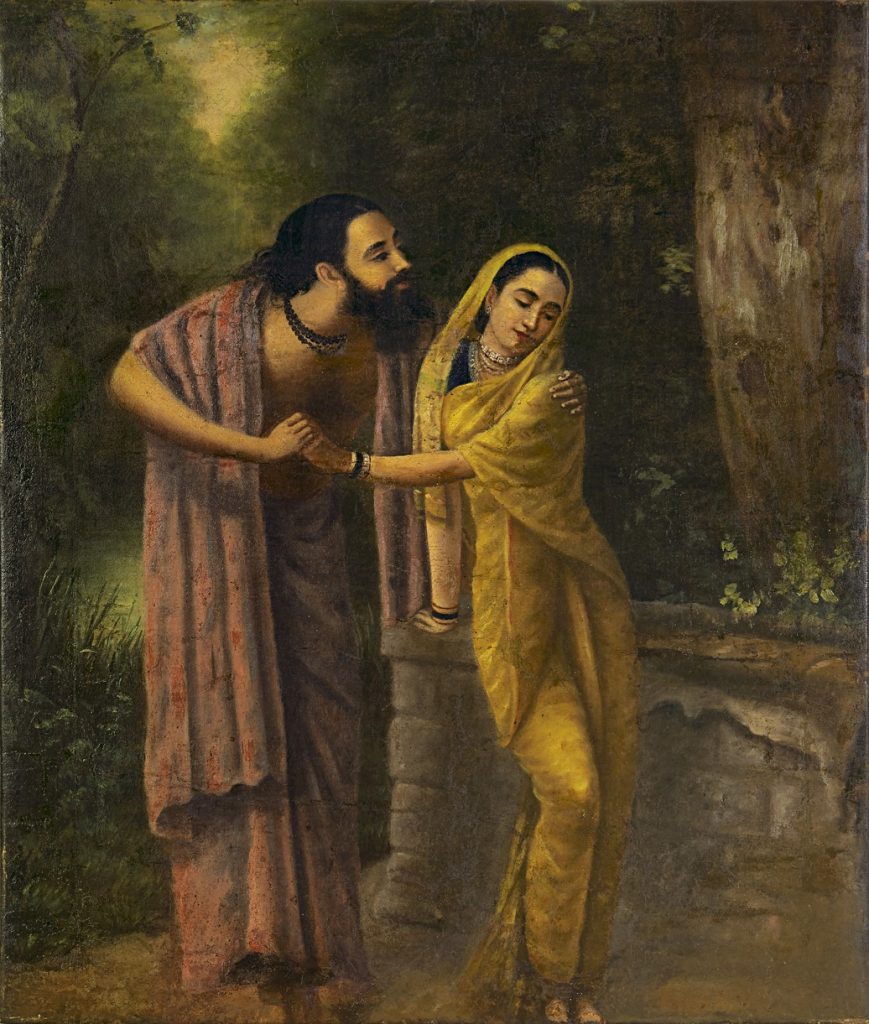
Raja Ravi Varma, Arjun And Subhadra, c. 1890. AstaGuru.
The contribution of the members of the Tagore family toward modern Indian art can never be overstated. One of the most important artists representing India on the world stage, Rabindranath Tagore became the first Indian and Asian to receive a Nobel Prize for his extraordinary anthology titled Geetanjali. A multifaceted personality, his contribution to art was diverse with poems, novels, essays, as well as paintings.
Abanindranath Tagore emerged as a proponent of “Swadeshi” value in Indian art. He founded the famous Bengal School of Art, which was a milestone development in the history of modern Indian art. He invoked the past like a true cultural nationalist but the style he evolved under the sign of “Indian” did not correspond to anyone’s past style of Indian painting. A satirical genius, Gaganendranath Tagore executed cartoons and caricatures to comment on the hierarchical prejudice meted out to his countrymen during the colonial era at the hands of Englishmen and members of Indian aristocracy.
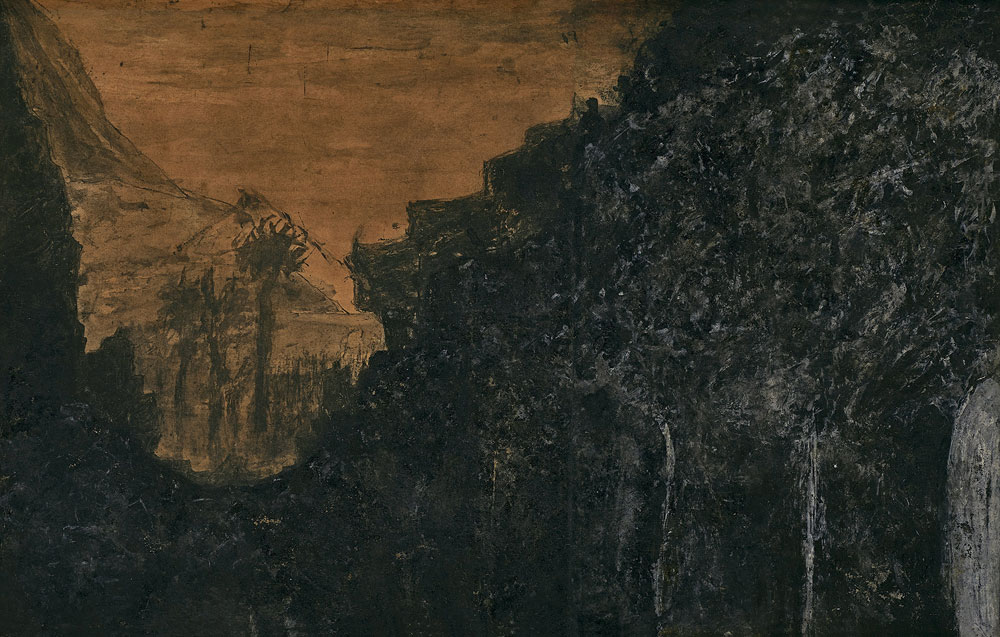
Rabindranath Tagore, Untitled, c. 1930. AstaGuru.
Revered for his ground-breaking contributions to Indigenous visual iconography, Jamini Roy dedicated his artistic career to capturing the essence of rural folks and giving modern Indian art its own identity. His oeuvre underwent monumental changes. After early success with several commissions of portraits and landscapes, he completely abandoned the technique of European naturalism. In a quest to return to his roots, he sought inspiration from traditional Kalighat Pata paintings, which were commonly sold outside the Kalighat Temple of the erstwhile Calcutta.
His practice also broke free from the western medium of oil paint, and he started sourcing bold colors like yellow, blue, green, red, and white from natural elements such as vegetable colors and mineral pigments. He started experimenting with surfaces and also adapted to a flat and linear modernist style of painting. He believed that art is for the masses and left a large body of work that represents a remarkable juncture in the evolution of modern Indian art.

Jamini Roy, Untitled (Apsaras), c. 1930. AstaGuru.
Like an incandescent shooting star, Amrita Sher-Gil brightened the horizon of Indian art and brought it unprecedented recognition and glory. Showcasing her prodigious artistic prowess at an early age, she joined L’Académie de la Grande Chaumière at 16 and later studied at the prestigious École des Beaux-Arts in Paris. The young student soon charmed the critics with work titled Young Girls, which garnered several accolades including a gold medal at the Grand Salon in Paris. The award also resulted in her becoming the youngest and the only Asian member of the Salon ever.
Sher-Gil’s early oeuvre is visual poetry about her intimate relationship with herself and the women around her. Painting herself and her close friends in different shades of emotions, she recorded the inconsequential simple moments of their lives profoundly. Her travel from Hungary to India in 1937 had a great impact on her. Inspired by her sojourns to the rural countryside, she recognized a longing to dedicate her art to the people of her country.
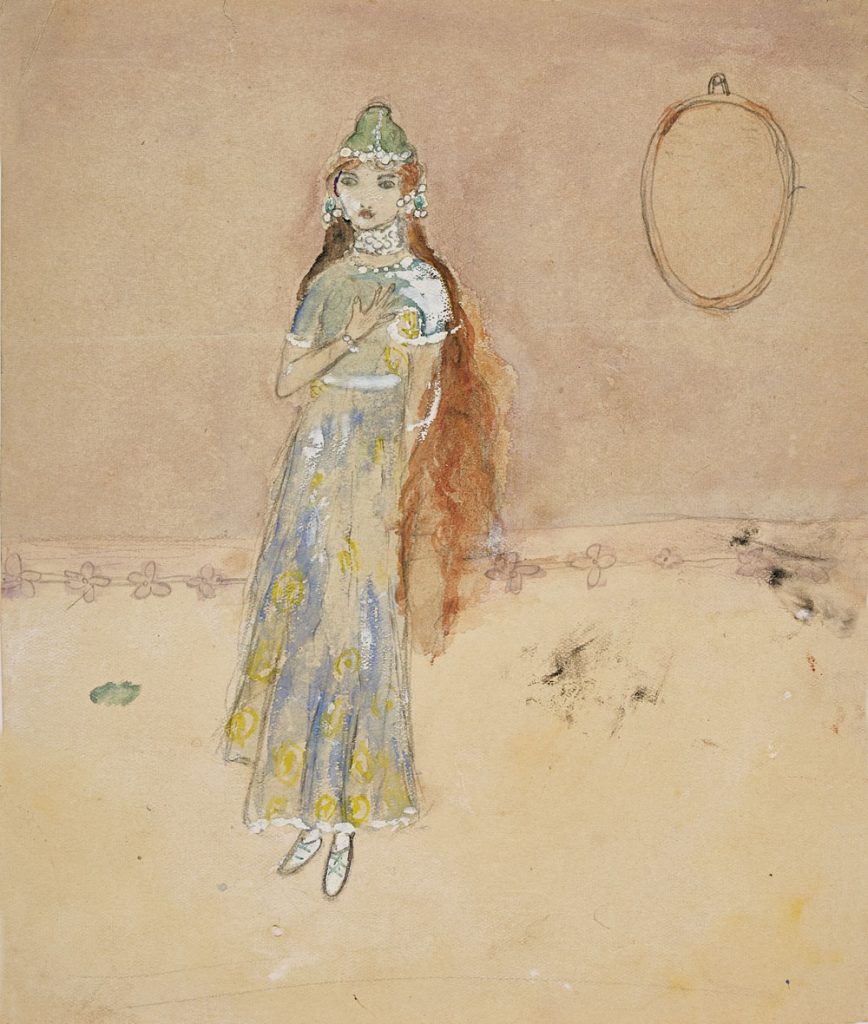
Amrita Sher-Gil, A Farkas Khan Leanya (The daughter of the Wolf Khan), 1928. AstaGuru.
An unrestrained artistic genius, M. F. Husain has left an important legacy of modern Indian art with his remarkable oeuvre. An inspiring example of success, Husain started his career as a toymaker and painter of cinematic billboards and strived through these hardships to emerge as one of the most important figures of Indian art. Adapting to a Cubist style and yet being anchored to his traditional roots, Husain’s extraordinary works led him to be monikered “Picasso of India”.
The artist was influenced by a range of sources including scriptures and epics from different religions as well as India’s culture and political history. This inspired the creation of several landmark series of paintings including his works based on the Mahabharata, India’s colonial past, and Mother Teresa among others. A multifaceted artist who was way ahead of his time, Husain also dabbled in experimental cinema decades ago in 1967 with his highly acclaimed film Through the Eyes of A Painter.
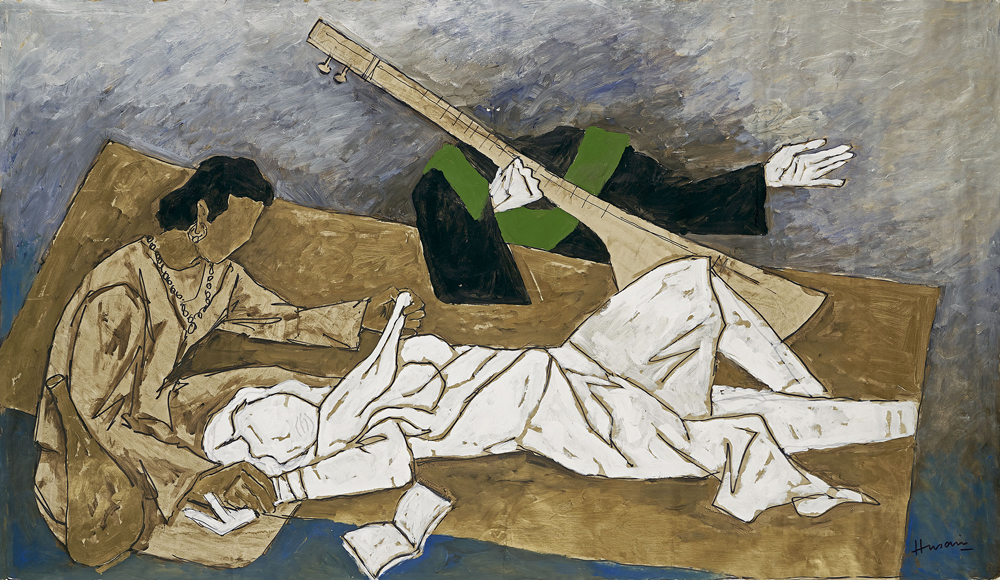
M. F. Husain, Lovers, c. 1980. AstaGuru.
One of India’s most celebrated artists, S. H. Raza spent his childhood in the towns adjoining the forest of Madhya Pradesh which instilled an awareness of the surrounding nature. One of the members of the Bombay-based Progressive Artists’ Group, he started his career painting abstract landscapes. His career witnessed several phases of artistic progression during which he heavily experimented.
By the 1970s, the artist realized that he was missing the feeling of Indian aesthetics. He envisioned entwining spirituality with his art and yearned to encapsulate the essence of traditional Indian art in his works. The artist intensely researched structure, diagrams, and colors. He studied the fundamentals that drive and constitute mandalas and the chakras. Never replicating them, he chose to create and translate his own perception of shapes, color, and energy through his invented vocabulary. This resulted in the inception of Bindu, the iconic symbol that the artist constantly reinterpreted during the last three decades of his life.
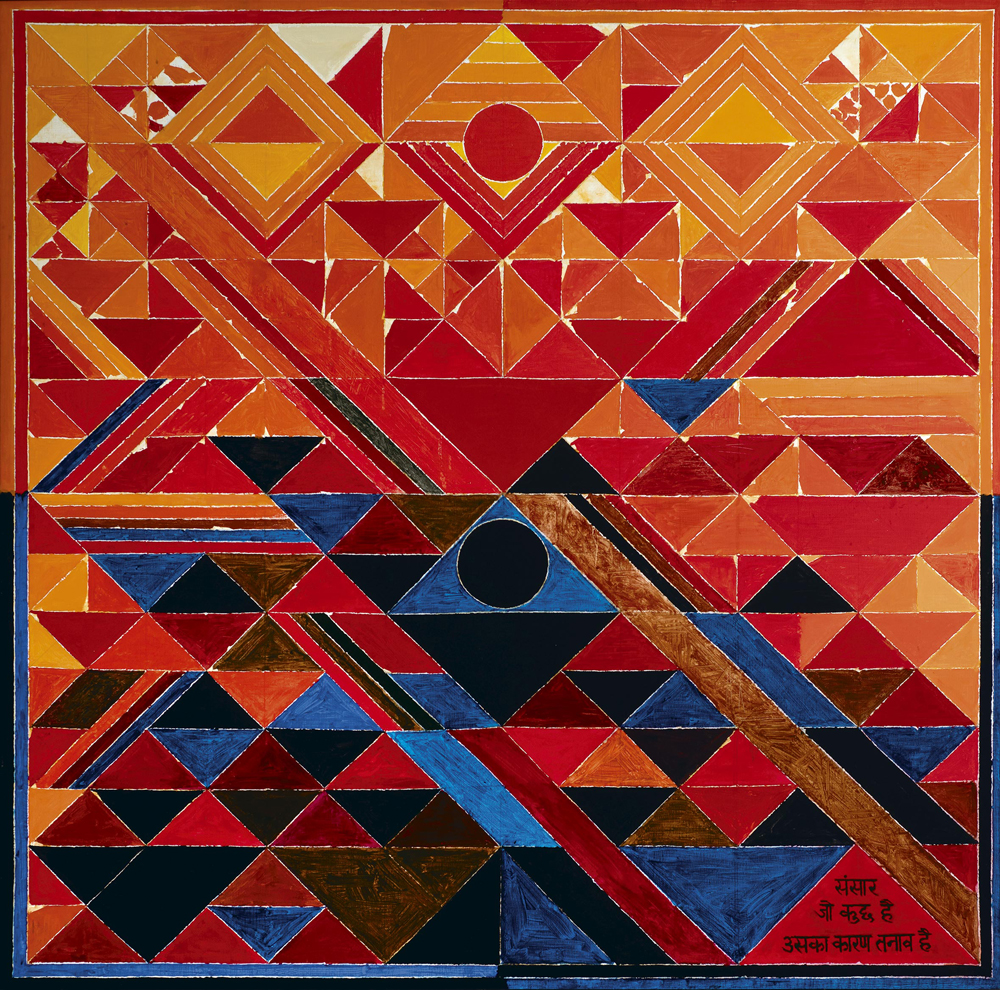
S.H Raza, Tanava, 2001. AstaGuru.
The enigmatic enfant terrible of Indian art, F. N. Souza relentlessly rejected artistic conventions and consistently championed the innovation of independent vocabulary of Indian art. Instrumental in the formation of India’s famous Progressive Artists’ Group, he charted his career with grotesque and thought-provoking imagery to challenge the preconceived notions and banality of life.
F. N. Souza shifted base to England in 1949. Experiencing the initial artistic struggles for a few years, he made a mark for himself after the astounding outcome of his first solo exhibition at Gallery One in London in 1960. The exhibition was sold out, and the artist was forever set on a path of extraordinary success. What never changed though was his rebellious attitude. Constantly experimenting with his themes, he brought a brilliant versatility to his oeuvre that was influenced by a range of inspirations including the art of the Renaissance and his hometown Goa.
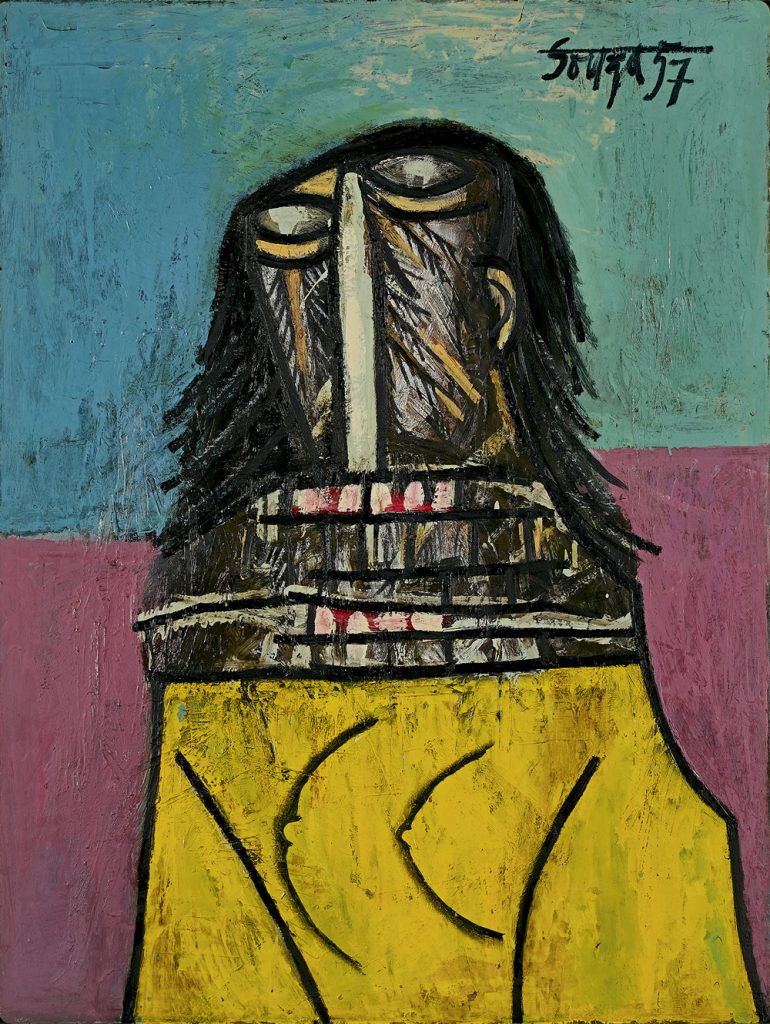
F.N Souza, Girl In A Yellow Sweater, 1957. AstaGuru.
V. S. Gaitonde relentlessly dedicated his life to painting but did not appreciate being branded as an abstract painter. He did not believe that abstract as a genre existed at all and instead proclaimed his work as “non-objective”. His initial artistic structure was inspired by the technique of figurative illustration and drew inspiration from the works of European modernist Paul Klee.
Inspired by the study of Zen Buddhism and various other philosophies, his works evoked a sense of meditative silence. His thoughts excavated subjects that only further propelled him to drown the human existence in its mortal representational form. V. S. Gaitonde’s paintings belong to the spiritual realm owing to their elixir-like tribute, which also makes him one of India’s greatest abstract painters.
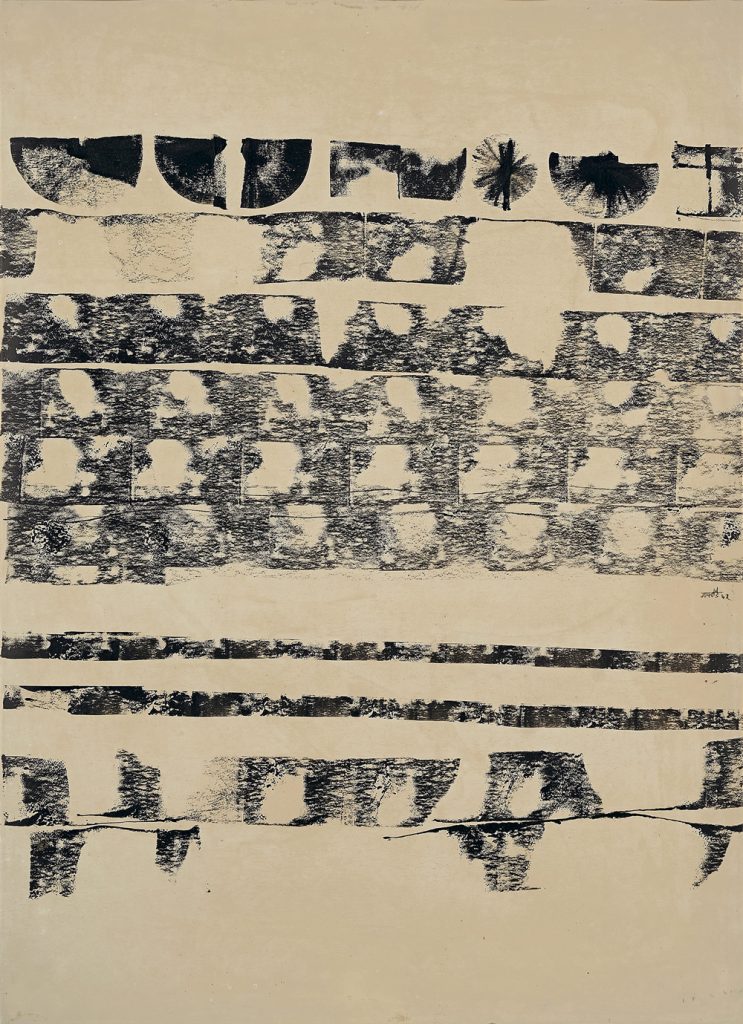
V.S Gaitonde, Untitled, 1963. AstaGuru.
Eminent modernist Jehangir Sabavala had an illustrious career during which he primarily worked in the medium of oil and showcased many landscapes of beach scenes and seascapes. Inspired by his synthesized training in different western styles including Cubism, Impressionism, and Expressionism, the artist developed an individualistic visual vocabulary after his return to India in the mid-1960s. He brought a range of emotions to his paintings with an alluring play of light, shadow, and texture. Jehangir Sabavala showcased his works in multiple exhibitions during a career spanning six decades.
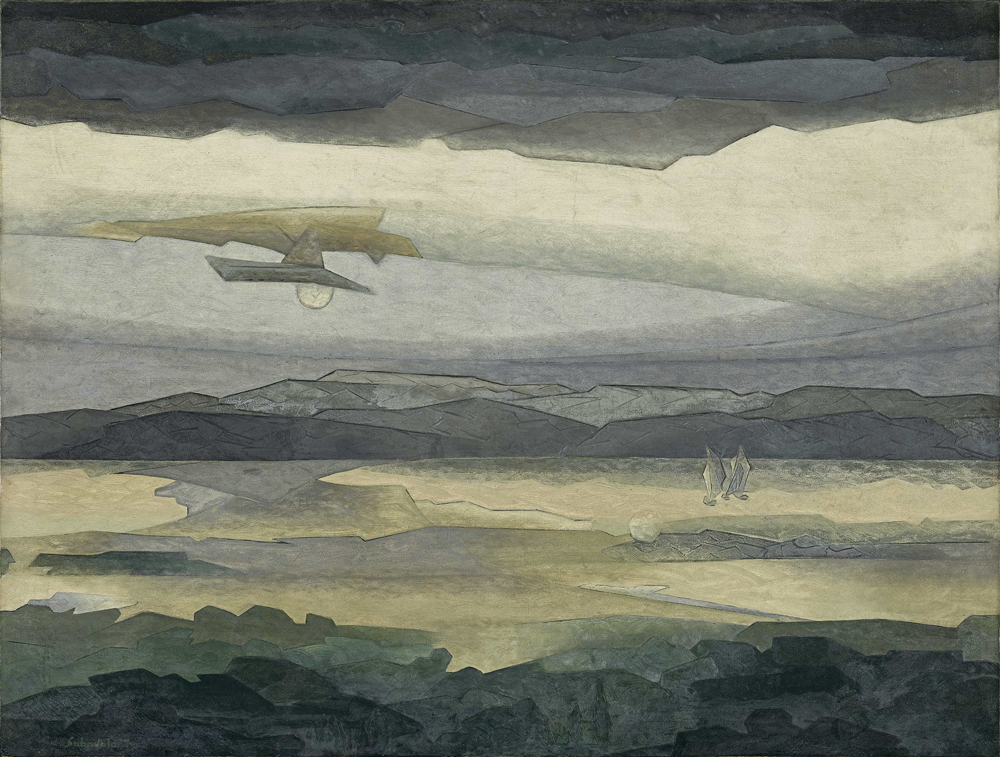
Jehangir Sabavala, The Hooded Day, 1970. AstaGuru.
Artist Tyeb Mehta started his career with works inspired by European art. He then moved on to creating works symbolizing ordinary life with paintings of rickshaw pullers and trussed Bull. After his first show in 1959, the artist moved to London and stayed there for five years where his style continued to evolve. While he never abandoned figurative work, his artistic progression led him to create highly textured expressionist works. In the 1960s he went to New York on a Rockefeller Foundation scholarship.
The artist began his famous Diagonal series after returning to India. His artistic idiom continued to expand and during the 1980s, he embarked on an exploration of Hindu mythology through the depiction of the Goddess Kali. He also explored filmmaking and directed a three-minute film Koodal which depicted the dilemma of an ordinary human being. The film won critical acclaim including the Filmfare Critics’ Award in 1970. Working with extreme dedication and continuing on a canvas till he was truly satisfied, Tyeb Mehta created an oeuvre that cemented his name as one of the finest Indian modernists.
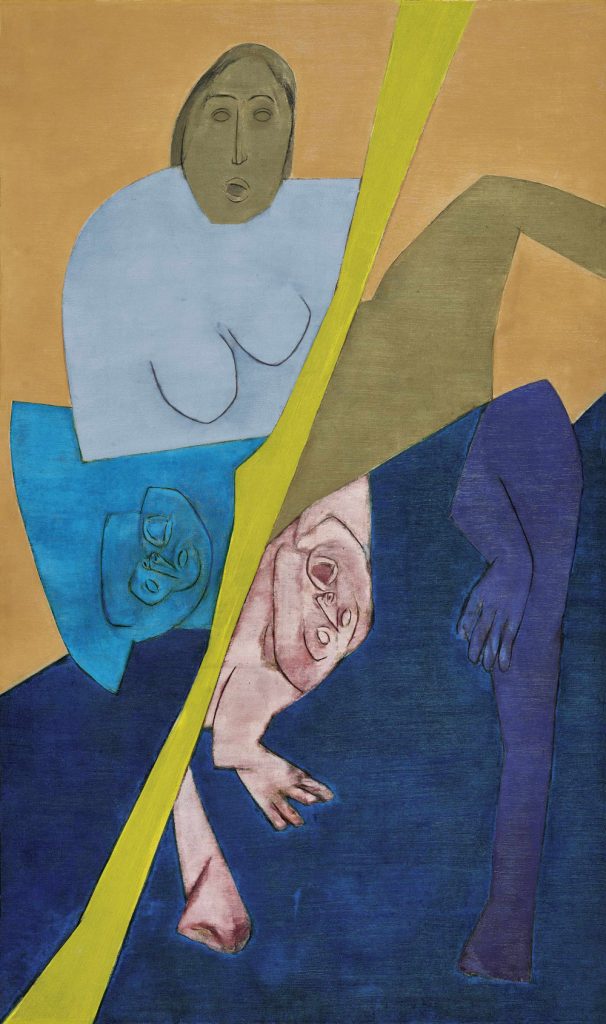
Tyeb Mehta, Diagonal, 1973. AstaGuru.
Author’s bio:
Sunny Chandiramani serves as Vice President, Client Relations, AstaGuru Auction House. Since joining AstaGuru, Sunny has contributed to over 50 successful auctions. One of the things she cherishes about working in this segment is the opportunity to view firsthand the works of various modern Indian painters who have left quite a legacy. Being a veteran in this field, she understands not only the importance of each artwork but also the market fundamentals and statistics.
DailyArt Magazine needs your support. Every contribution, however big or small, is very valuable for our future. Thanks to it, we will be able to sustain and grow the Magazine. Thank you for your help!